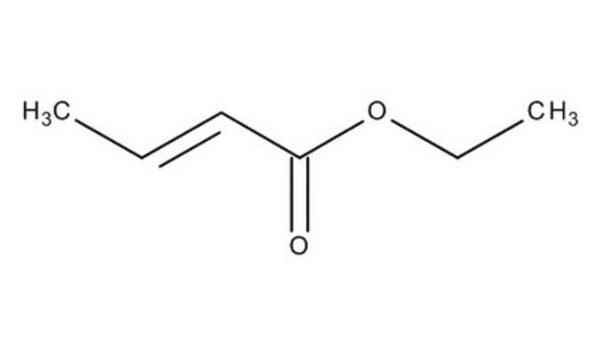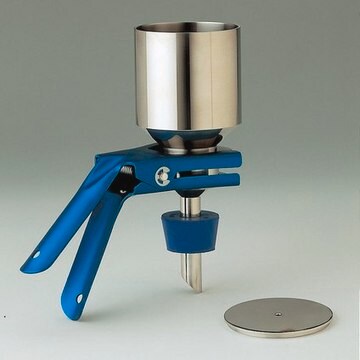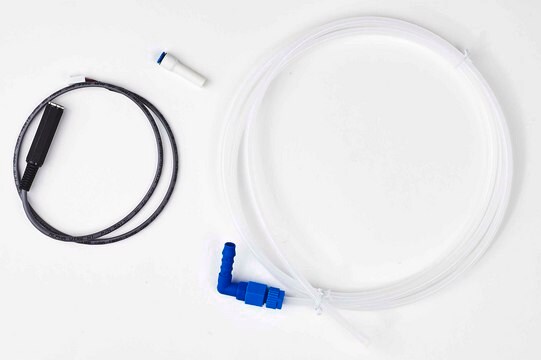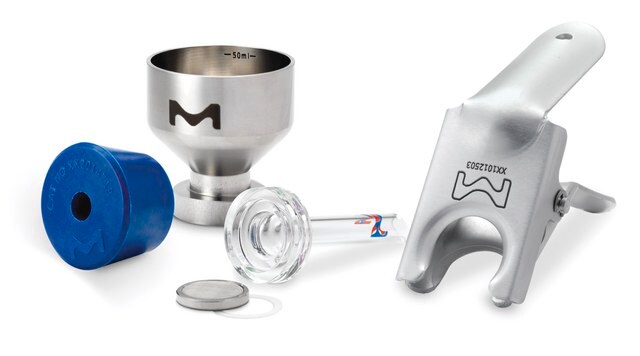Key Documents
W348600
Ethyl trans-2-butenoate
≥96%, FG
Synonim(y):
Ethyl (E)-2-crotonate, Ethyl crotonate
About This Item
Polecane produkty
pochodzenie biologiczne
synthetic
Poziom jakości
klasa czystości
FG
Halal
Kosher
zgodność regionalna
EU Regulation 1334/2008 & 178/2002
FDA 21 CFR 172.515
Próba
≥96%
Zastosowanie
flavors and fragrances
Dokumentacja
see Safety & Documentation for available documents
alergen pokarmowy
no known allergens
Organoleptyczne
caramel; pungent; rum; sweet
InChI
1S/C6H10O2/c1-3-5-6(7)8-4-2/h3,5H,4H2,1-2H3/b5-3+
Klucz InChI
ZFDIRQKJPRINOQ-HWKANZROSA-N
Szukasz podobnych produktów? Odwiedź Przewodnik dotyczący porównywania produktów
Opis ogólny
Zastosowanie
- Comparison of the Fruit Volatile Profiles of Five Muscadine Grape Cultivars (Vitis rotundifolia Michx.) Using HS-SPME-GC/MS Combined With Multivariate Statistical Analysis.: This study details the analysis of volatile profiles in different Muscadine grape cultivars, providing insight into their chemical compositions during various stages of fruit development, which could be crucial for enhancing flavor and aroma in food products (Deng et al., 2021).
- Effects of methanogenic inhibitors on methane production and abundances of methanogens and cellulolytic bacteria in in vitro ruminal cultures.: This study explores the reduction of methane emissions through the use of inhibitors, contributing to more sustainable agricultural practices and environmental conservation (Zhou et al., 2011).
Hasło ostrzegawcze
Danger
Zwroty wskazujące rodzaj zagrożenia
Zwroty wskazujące środki ostrożności
Klasyfikacja zagrożeń
Eye Irrit. 2 - Flam. Liq. 2
Kod klasy składowania
3 - Flammable liquids
Klasa zagrożenia wodnego (WGK)
WGK 2
Temperatura zapłonu (°F)
35.6 °F - closed cup
Temperatura zapłonu (°C)
2 °C - closed cup
Środki ochrony indywidualnej
Faceshields, Gloves, Goggles, type ABEK (EN14387) respirator filter
Wybierz jedną z najnowszych wersji:
Masz już ten produkt?
Dokumenty związane z niedawno zakupionymi produktami zostały zamieszczone w Bibliotece dokumentów.
Nasz zespół naukowców ma doświadczenie we wszystkich obszarach badań, w tym w naukach przyrodniczych, materiałoznawstwie, syntezie chemicznej, chromatografii, analityce i wielu innych dziedzinach.
Skontaktuj się z zespołem ds. pomocy technicznej










